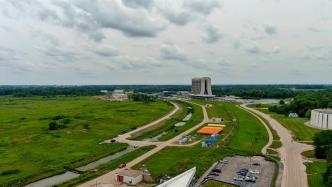
Recently, American particle physicists announced their research vision for the next five to 10 years and released a report "Exploring the Quantum Universe: Pathways to Innovation and Discovery in Particle Physics." This report, prepared by the Particle Physics Project Priority Group (P5), details five high-energy physics research projects that the United States should prioritize funding in the future.
P5 is a group of the National Academy of Sciences that advises the Department of Energy (DOE) and the National Science Foundation (NSF), the two main agencies that fund high-energy physics research in the United States.
The No. 1 priority project is the Cosmic Microwave Background (CMB) Phase 4 project, or CMB-S4. The project plans to build an array of 12 radio telescopes between Chile's Atacama Desert and the Antarctic, with the goal of looking for indirect evidence of physical processes in the instant after the big bang. So far, these processes have been mostly speculative.
The other four priority projects include experiments to study neutrinos from space and created in the laboratory, the largest dark matter detector ever built and a Large Particle Collider to study the Higgs boson.
The report also strongly recommends that the United States continue to fund ongoing experiments, including the first major upgrade of the Large Hadron Collider (LHC), which will keep the CERN collider operating into the 2030s. .
The five priority projects were selected from recommendations made at last year's Snowmass Conference in Seattle.
It is worth mentioning that the goal of the preferred project CMB-S4 is to study the radiation produced approximately 380,000 years after the Big Bang. The microwave antenna will measure the CMB's polarization, the angle at which most of the radiated electric field swings when it reaches Earth. Physicists hope that the resulting polarization patterns will reveal the characteristic patterns of gravitational wave production. The CMB can detect the oldest electromagnetic radiation, and its polarization can provide a window into earlier times.
Several large experiments, including the European Planck Space Telescope and the BICEP2 telescope at the South Pole, are trying to find signs of primordial gravitational waves in the polarization of the CMB. In the Atacama Desert, astronomers are building an array called the Simons Observatory, which is expected to be completed by mid-2024. Researchers envision CMB-S4 as a scaled-up version of the Simmons Observatory that will begin observing in the mid-2030s.
In addition, the Deep Underground Neutrino Experiment (DUNE) is already under construction and is expected to be completed in the early 2030s.
In its last prioritization exercise in 2014, P5 ranked DUNE, then estimated to cost $1.9 billion, as its top priority for new projects to fund. Construction of the project has since been plagued by severe delays and cost overruns, prompting DOE to reduce the size of the South Dakota detector by nearly half. Even in this scaled-down version, the project is expected to cost more than $3 billion.
Many physicists believe the scientific basis for DUNE remains compelling. P5 is advocating for a second phase to bring the detector to its expected size and upgrade the laboratory to make its micron beam 10 times more powerful.
